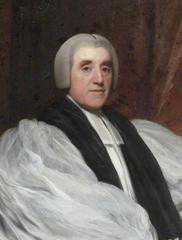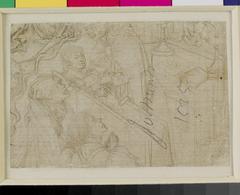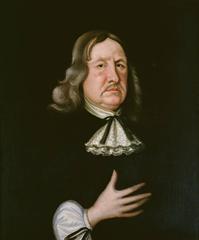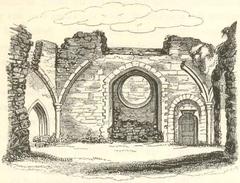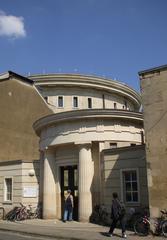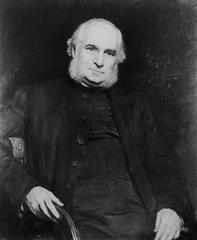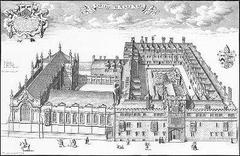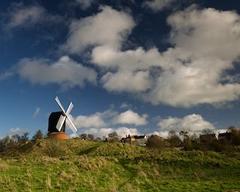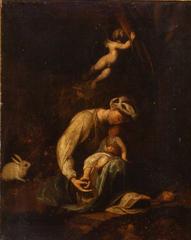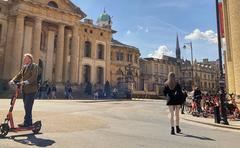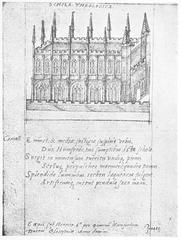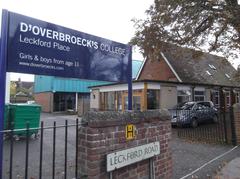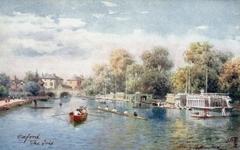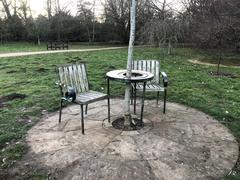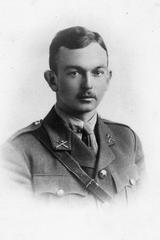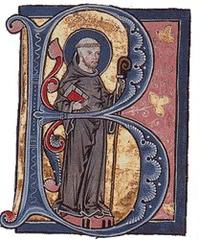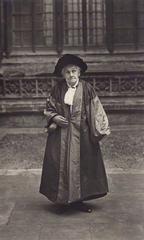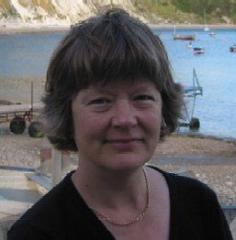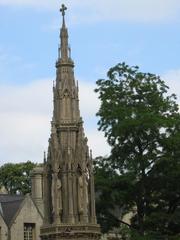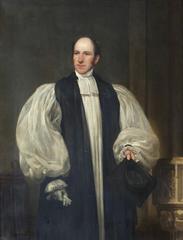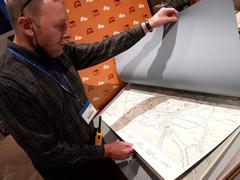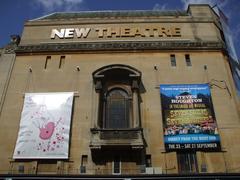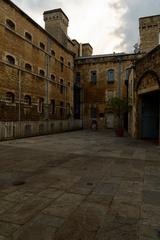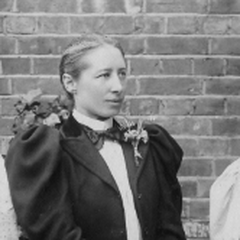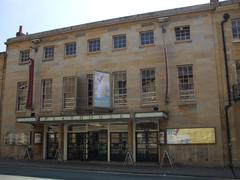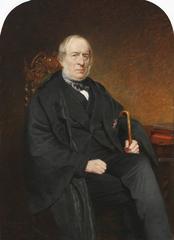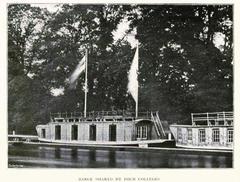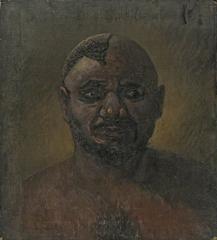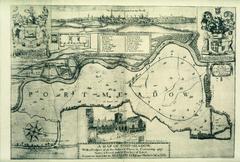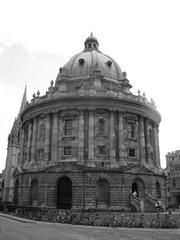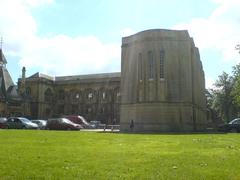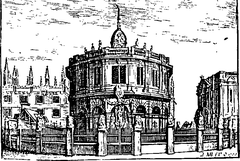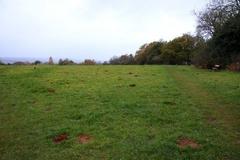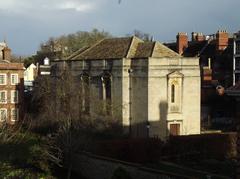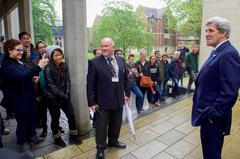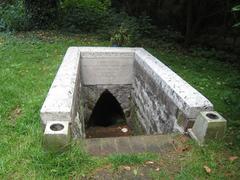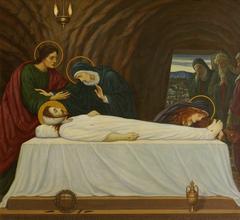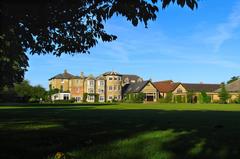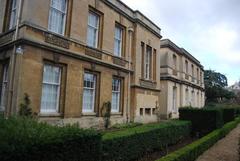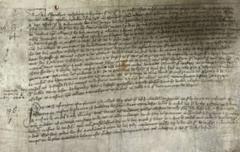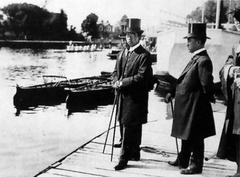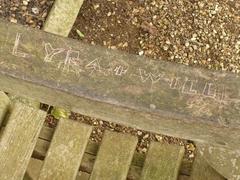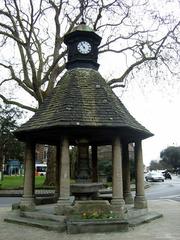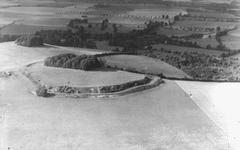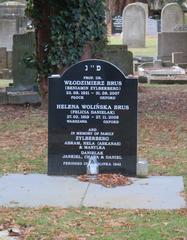
Holywell Cemetery: Visiting Hours, Tickets, and Historical Sites Guide in Oxford, United Kingdom
Date: 04/07/2025
Introduction
Holywell Cemetery, nestled in the historic heart of Oxford, is a remarkable testament to Victorian heritage, academic distinction, and urban biodiversity. Established in 1847 amidst the garden cemetery movement, it was designed to provide a dignified and landscaped alternative to the overcrowded churchyards of 19th-century England. Today, Holywell Cemetery stands as a tranquil sanctuary, blending historical significance with ecological vitality, and welcomes visitors seeking reflection, nature, and insight into Oxford’s rich past (Oxford Mail; Oxford City Council; Oxford Preservation Trust).
This comprehensive guide covers everything you need to know to plan your visit: hours, accessibility, historical context, notable burials, biodiversity highlights, travel tips, and ways to support ongoing conservation.
Table of Contents
- Introduction
- History and Origins
- Architectural and Landscape Features
- Notable Burials and Academic Legacy
- Restoration and Conservation Efforts
- Biodiversity and Ecological Value
- Visiting Information: Hours, Tickets, and Accessibility
- Guided Tours, Events, and Community Involvement
- Nearby Attractions and Travel Advice
- Visitor Facilities and Practical Tips
- Photography and Visitor Etiquette
- Seasonal Highlights
- Frequently Asked Questions (FAQ)
- Conclusion and Call to Action
- References
History and Origins
Holywell Cemetery was founded in 1847 in response to public health crises and overcrowding in Oxford’s parish churchyards. Alongside St Sepulchre’s and Osney Cemeteries, it marked Oxford’s adoption of the garden cemetery model, prioritizing sanitary, landscaped grounds for burials (Oxford Mail). The site on St Cross Road was chosen for its proximity to key parishes—St Mary the Virgin, All Saints, and St Cross—and its suitability for a tranquil, green refuge.
From the outset, Holywell Cemetery was embraced by Oxford’s academic and civic elite, reflected in its array of distinguished memorials and the diversity of those interred.
Architectural and Landscape Features
Embodying Victorian design principles, Holywell Cemetery features meandering paths, mature trees, and a traditional stone boundary. The entrance is marked by a lychgate, and the site’s layout harmonizes with Oxford’s natural terrain. Memorials range from simple headstones to elaborate monuments, many adorned with symbolic carvings such as angels, urns, and crosses—each telling stories of lives lived and lost.
The original lodge, built in 1850 for the caretaker, and the now-absent chapel, once enhanced the site’s dual role as a sacred and community space (Oxford Mail).
Notable Burials and Academic Legacy
Holywell Cemetery is the final resting place of many prominent figures, particularly from Oxford’s academic, literary, and civic spheres:
- Kenneth Grahame (1859–1932): Author of The Wind in the Willows (Oxford Mail).
- Sir Hugh Cairns (1896–1952): Nuffield Professor of Surgery and pioneering neurosurgeon.
- Benjamin Henry Blackwell (1849–1924): Founder of Blackwell’s bookshops.
- Sir Henry Wentworth Acland (1815–1900): Physician and public health reformer.
- Sarah Angelina Acland (1849–1930): Pioneer of early color photography.
- Sir John Stainer (1840–1901): Composer and musicologist.
- Sir Charles Sherrington (1857–1952): Nobel Prize-winning neurophysiologist.
- Numerous college heads, mayors, and individuals commemorated in the Oxford Dictionary of National Biography (Oxford History).
The cemetery’s diverse array of memorials and inscriptions offers a compelling narrative of Oxford’s intellectual and civic history.
Restoration and Conservation Efforts
After periods of neglect in the 20th century, Holywell Cemetery has undergone significant restoration since 2017, driven by the Friends of Holywell Cemetery and local volunteers (Oxford Preservation Trust). Initiatives included clearing overgrown paths, repairing monuments with traditional lime mortar, and enhancing visitor access. These efforts culminated in the 2023 Oxford Preservation Trust Award for excellence in landscape and public realm conservation.
Biodiversity and Ecological Value
Once neglected, Holywell Cemetery has become a vibrant urban wildlife haven:
- Avian Life: Home to pheasants, blackbirds, robins, wrens, woodpeckers, and even owl boxes (Oxford Conservation Volunteers).
- Mammals: Regularly visited by foxes, muntjac deer, hedgehogs, voles, and shrews.
- Invertebrates: Butterflies, bees, and other pollinators flourish among wildflowers and ivy.
- Flora: Mature yew, holly, magnolia, and ivy provide year-round cover and food sources.
Conservation work balances the maintenance of historic graves with active management of invasive species and the promotion of native biodiversity (Oxford Conservation Volunteers).
Visiting Information: Hours, Tickets, and Accessibility
- Opening Hours: Open daily from dawn until dusk; seasonal variations may occur (Britain Express).
- Entry Fee: Free of charge; donations to the Friends of Holywell Cemetery are appreciated (Holywell Cemetery).
- Location: 10 St Cross Road, Oxford, OX1 3UH, behind St Cross Church and beside Holywell Manor.
- Transport: Easily accessible on foot from Oxford city centre; served by local bus routes; no onsite parking.
- Accessibility: Paths are mostly unpaved and uneven; limited wheelchair access. Main routes are more accessible, but visitors with mobility concerns should plan accordingly and may contact the Friends for guidance.
- Facilities: No public toilets or refreshments onsite; nearby facilities in central Oxford.
Guided Tours, Events, and Community Involvement
- Guided Tours: Occasional guided walks and special events are organized by the Friends of Holywell Cemetery, especially during heritage open days. A detailed self-guided tour is available online (Holywell Cemetery Guided Tour).
- Community Engagement: Volunteer sessions maintain the grounds and support both heritage and ecological aims (Oxford Preservation Trust).
Nearby Attractions and Travel Advice
Combine your visit with Oxford’s other highlights:
- University Church of St Mary the Virgin
- Bodleian Library
- Oxford Botanic Garden
- University Parks
- Historic colleges
These nearby sites offer a rich context for exploring Oxford’s heritage (Oxford City Council).
Visitor Facilities and Practical Tips
- Footwear: Wear sturdy shoes, especially after rain, as paths may be muddy or slippery.
- Weather: Dress appropriately for seasonal changes; spring and summer bring wildflowers, while autumn and winter highlight the cemetery’s structure and mature trees.
- Quiet Reflection: Maintain a respectful demeanor; keep voices low and avoid disturbing wildlife or memorials.
Photography and Visitor Etiquette
Photography for personal use is welcome—capture the site’s historic monuments and wildlife, but respect the dignity of graves and avoid climbing or causing damage. Dogs are welcome but must be kept on a leash to protect wildlife.
Seasonal Highlights
Each season transforms the cemetery: spring and summer offer lush greenery and wildflowers, autumn brings golden leaves, and winter reveals the stark beauty of the landscape. The site’s year-round accessibility ensures there’s always something to discover (Oxford Visit).
Frequently Asked Questions (FAQ)
What are Holywell Cemetery’s visiting hours?
Open daily during daylight hours, from dawn until dusk.
Is there an entrance fee or tickets required?
No, entry is free; donations are welcomed.
Is the cemetery wheelchair accessible?
Accessibility is limited; main paths are more accessible, but the terrain is uneven.
Are guided tours available?
Guided tours are occasionally offered; a detailed self-guided tour is available online.
Are there facilities like toilets or refreshments?
No; plan to use facilities in central Oxford.
Are dogs allowed?
Yes, but they must be kept on a leash.
Can I take photographs?
Yes, respectful photography is encouraged.
Conclusion and Call to Action
Holywell Cemetery stands as a peaceful and inspiring gem in Oxford, uniting Victorian heritage, academic legacy, and thriving urban biodiversity. Restored and maintained by dedicated volunteers, it offers a meaningful space for visitors of all interests. Explore its winding paths, reflect on its storied past, and appreciate its ecological richness. Support its future by donating, volunteering, or simply sharing your experience.
For a richer visit, download the Audiala app for guided audio tours, and explore Oxford’s broader historical landscape through our related guides and social media updates.


